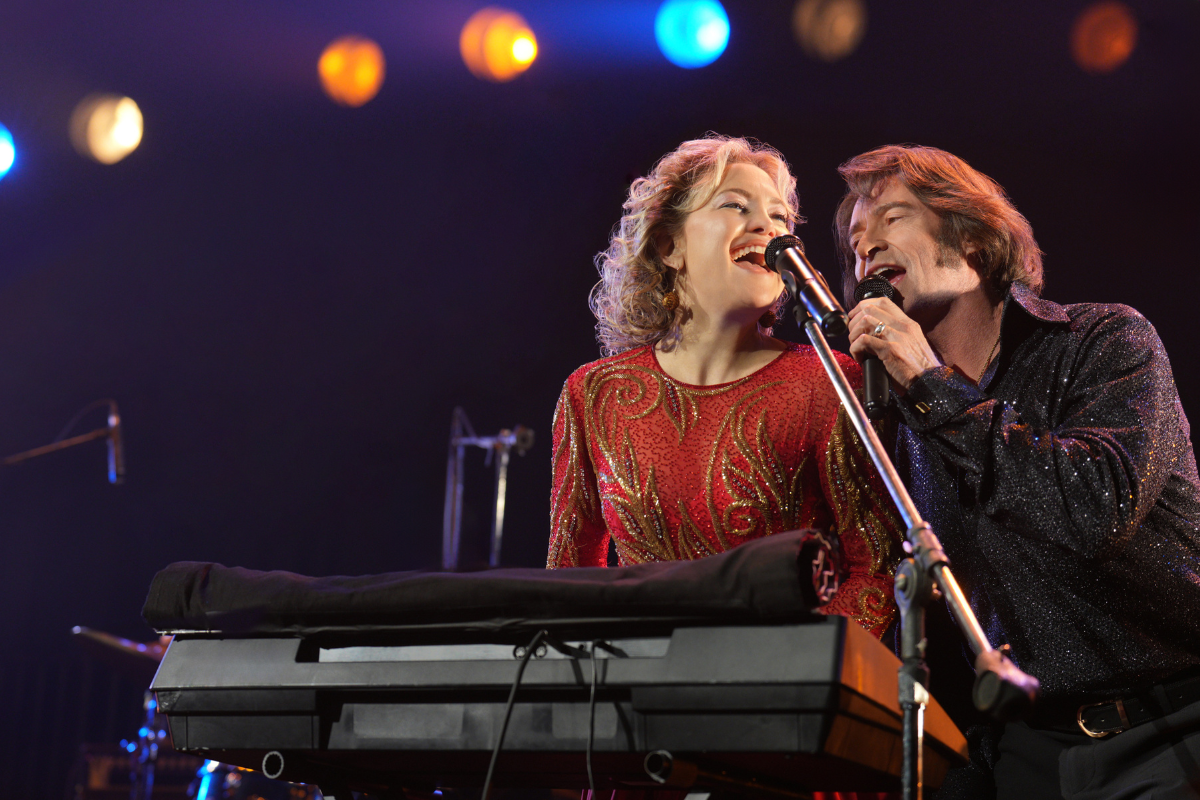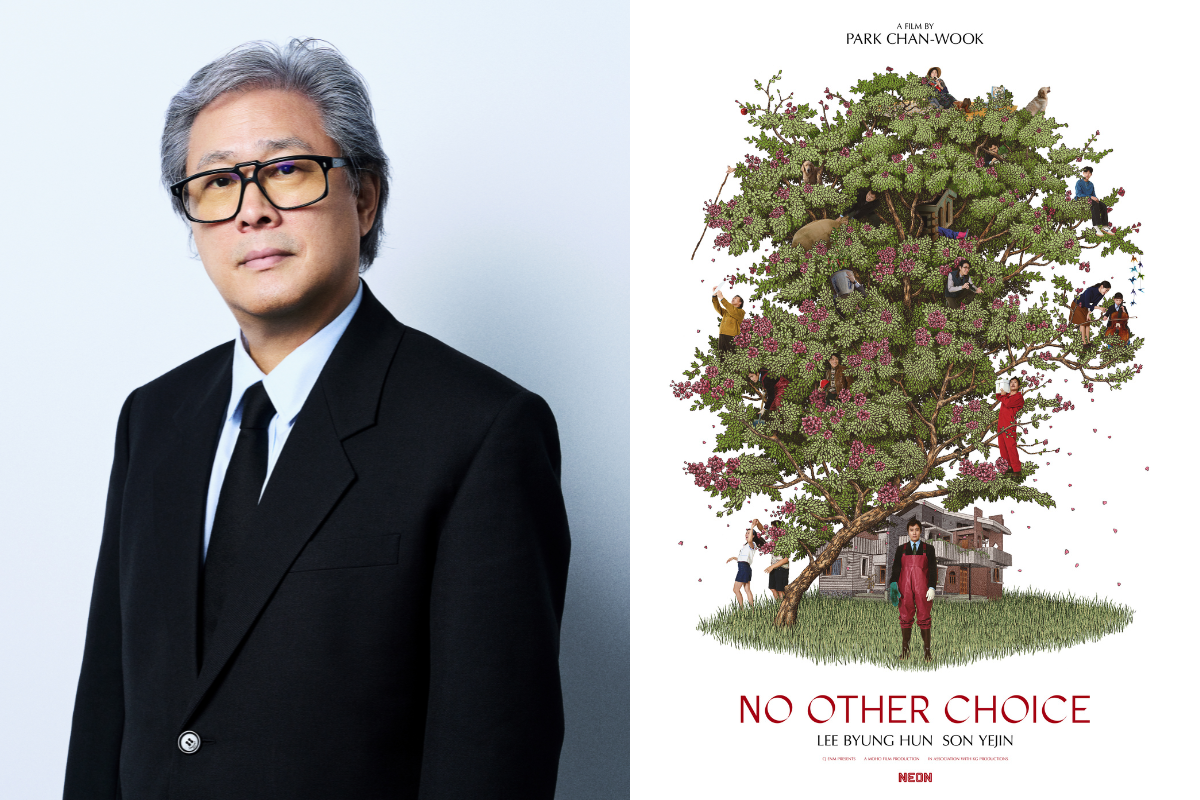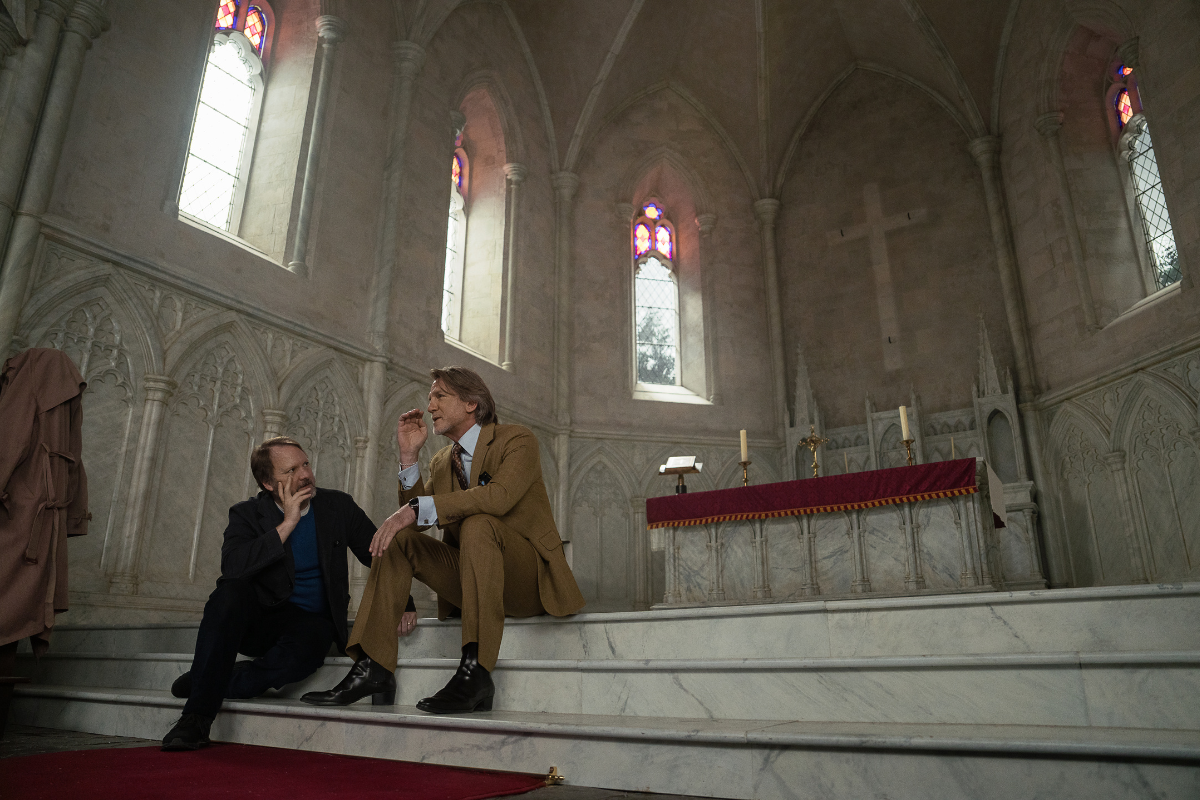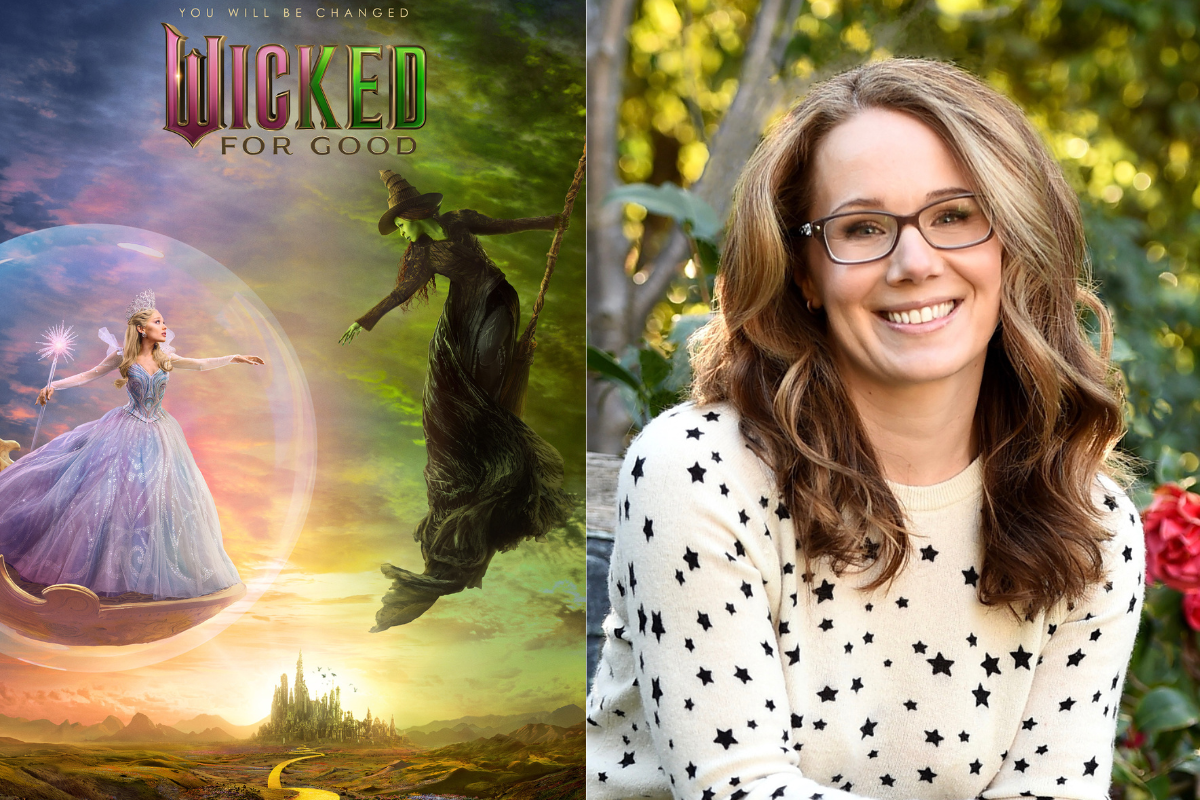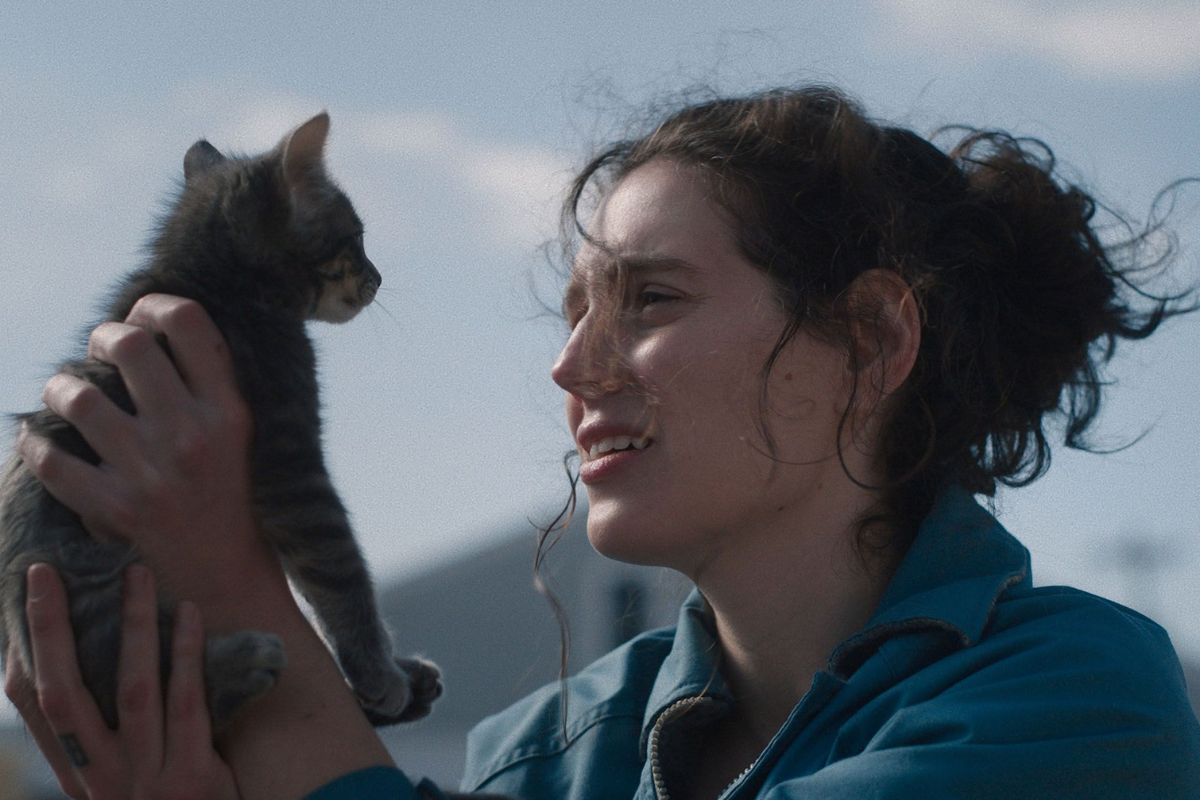Habitat for Humanity: Zoë Eisenberg Talks Island Community in ‘Chaperone’
Zoë Eisenberg discusses her writing process, creating a messy female protagonist, casting and more.
Male characters, whether protagonists or antagonists, often get to be messy and problematic and are still embraced by audiences to some degree. Does the same hold true for female characters? Hawaii-based filmmaker, fiction writer, and circus producer Zoë Eisenberg decided to put this to the test with her provocative drama Chaperone. “When we were in development, we’d be pitching the story and so many people would say, 'She’s not likable.' Were people saying that about Patrick Bateman when that film was being developed?” she recently said to Script Magazine.
Chaperone, Slamdance 2024 Best Breakout Jury Award winner, revolves around aimless twenty-nine-year-old movie theater worker Misha who gets mistaken by an eighteen-year-old boy for someone his own age. They embark on a taboo relationship, with Misha spiraling into unmindful territory. The film is only the fourth feature to be shot by a female in the lush environment of Hawaii. Eisenberg, who’s lived in Kalapana, Hawaii for thirteen years, makes the most of the environment, creating an extension of the characters’ inner and outer lives.
On the Writing Process
Sonya Alexander: What inspired Chaperone, and how did the writing process differ from that of your novel Significant Others?
Zoë Eisenberg: This film has a very clear inciting incident for me. Just before I turned 30, a 17 or 18-year-old kid mistook me for a teenager and asked me out. I laughed a lot and told him, 'No thank you, I’m old.' We went our separate ways, and I got fixated on this question of what type of woman would have thought that was a good idea? He asked me to a house party of all things. What kind of woman would have gone to that? The story came from there.
I worked on the script for six or seven months from 2018 to 2019. It was accepted into a creative development program here in Hawaii called Creative Lab Hawaii. I took that script through that development process. It was in that program that I met the woman who would become my producer. She joined forces with me in 2019 and then COVID hit. We thought we were going to shoot in 2020. We actually brought our lead on in early 2020, thinking we were going to make the film that year and it did not happen.
My background is in fiction, so that’s what I was doing first. Then I learned how to screenwrite, a very different thing. It’s very structured, where a novel isn’t necessarily. I outline very heavily for screenplays. I have a scene-by-scene outline that’s about forty pages long before I begin the screenwriting process. So, I spend a lot of time outlining, then I bang out my first draft quite quickly, then I go through a revision process. That first draft usually takes me a couple of weeks once I finish the outline. Once I started developing that process in my screenwriting, I started using it for my fiction as well, and it’s greatly improved. It’s been cool to see how they’re in communication with each other, even though they’re very different mediums.
On Misha the Messy Protagonist
Sonya: How is Misha different from the female protagonists in Significant Others?
Zoë: The common thread…let me not answer your question [laughs] is I’m often writing about women making choices that are very challenging for my audience. I hear a lot of feedback about unlikable characters, but you still want to watch and read them, which is very flattering for me because that’s the kind of thing I like to watch and read too. Someone you’re like, 'Oh, girl, no! What are you about to do?' They all have that common denominator. They’re not afraid of going after what they want. They’re not afraid of making self-destructive choices. Misha is a lot different than at least one of the characters in my novel from last year, Significant Others. Misha is not ambitious and one of the protagonists in Significant Others is very ambitious. So they were very different to write.
Sonya: Would Misha have been the same anywhere or was there something particular about the Hawaiian culture that fostered her behavior?
Zoë: It’s a little less Hawaiian culture and more small-town island culture. I’ve heard feedback from people that this story could have taken place in any sleepy beach town. That said, I was very inspired by…here we live in a very structured ecosystem, so if you bring in one thing that doesn’t belong, that impacts everything around it, and I viewed Misha that way, I like to call her an unlikely predator. I don’t think she thinks she’s being predatorial. She’s trying to get her needs met like we all are. That’s what happens out here. You bring in a species that has no predator above it and it thrives. And everything that’s suffering around it is like 'This is not great for us.'
I was more inspired by the island ecosystem when writing her character and that comes out in the film as well with the coquí frogs. They’re very controversial on our island. They’re very loud. You can hear them in the film. The people who did not live here before the coquí frogs…like myself. I’ve been here thirteen years. The frogs have been here about twenty years. To me, it’s this romantic, beautiful sound. But if you remember the silent nights and soft ocean sounds, you hate the coquí frogs. They have no natural predators. I like to think of Misha that way.
On Hawaii’s Island Community
Sonya: That ties into the next question I’m going to ask. After living in Hawaii for a significant amount of time, how did that affect the way you approached the project?
Zoë: I love my community so much. The communities here can be quite insular. People are born here and live here and don’t want to leave. It’s gorgeous here. That attitude that is shared among the people here is rooted in kindness. The concept of aloha is truly something people are living every day. That creates an ecosystem where people want to stay and they’re happy in the jobs they have that might not be part of a “grind” mindset. Coming from the East Coast, where I was raised, there was a focus on ambition and progression, and meritocracy. There are people here who’ll say, 'I’ve worked as a cashier at this grocery store my whole life. It provides for me, I love my colleagues and my community. Why would I want anything else?' I don’t think it’s necessarily a Hawaiian mindset but an island one. I think that’s what Misha holds. She’s not ambitious, but she’s not lazy. She’s held down the same job for almost fifteen years. That is a feat in its own right. But she certainly gets a lot of judgement for it from people who don’t feel the same way.
On the Structure of Tragedy
Sonya: What do you feel happens after the last scene?
Zoë: What do you feel happens? [laughs]
Sonya: I don’t want to give any spoilers…!
Zoë: I view this film as a tragedy. I mean that in the sense of the structure of a story. I don’t think Misha necessarily learns and grows and changes.
Sonya: What do you think are the metrics for measuring adulthood?
Zoë: Happiness…! Stability is also a big one for me. Treadling lightly. Are you being destructive? Part of growing up for me is responsibility. How are you handling the people in your life, your relationships, your community? For me, a lot of growing up is being able to see outside yourself and seeing how your behavior impacts not only you but those around you.
Sonya: How do you think the story would be received if the roles were reversed?
Zoë: We’ve seen that story so many times, right? We tend to have an easier time loving men who are making a mess than women. That’s changing, though. One of my favorite films is Inside Llewyn Davis. It’s a tragedy. You’re watching the protagonist make a mess of his life and everyone’s life. You don’t necessarily like him, but you understand him and you’re sympathetic and you’re rooting for him even though he’s making terrible choices. We’re finally getting a little more leeway to do that for female stories.
On Casting
Sonya: How were the actors selected for this?
Zoë: Mitzi [Akaha] who plays Misha was the first piece of the puzzle. We actually cast her in 2020 because we thought we were making a movie in 2020, so she came on board two and a half years before the project actually went. She’s in every scene of the film. Her performance is what made people stop telling me that Misha is unlikable. She’s a wonderful, wise performer. Kanoa Goo came on next to play her brother Vik, which was very fun and different from the way the brother was written on the page. We’d written him mid-forties with a dad bod. My favorite part about casting is bringing in people that are unlikely for the role and letting them surprise you. Letting them become better than you had imagined. He certainly did that for Vik. Laird Akeo, who plays Jake, came in quite late…maybe a month before we shot. He was an interesting fit because Laird is 6’5. He’s looked 25 since he was eighteen. That was the yin to her yang. We have a woman that behaves and looks younger than her age and a man who looks and behaves older than he is. It really allowed the audience to relate more to why Misha would have made that choice.
On Future Projects
Sonya: What was the most important storytelling lesson you learned from this project?
Zoë: I don’t want to say “kill your darlings” because it’s cliche, but I discovered truly letting things go is important. We had fourteen days to shoot this. We often had twenty minutes to shoot a scene. I was often like, 'OK, this is a three-page scene that I’ve had written for five years, but we have twenty minutes, so it’s now a half-page scene.' So we’d have to find the heart of the scene and let everything else go, which was very freeing once I gave over to it, but it was certainly stressful in the moment.
Sonya: Are you working on any other projects right now?
Zoë: I have another novel in the works. I have a short story collection that I hope will come out next year. Then I’m writing features for friends to direct. I will direct again for sure, but right now I’m just focused on writing. I have a feature adaptation of a Kristiana Kahakauwila short story. She’s an amazing native Hawaiian writer. Then I’m in development with a Hawaii Parasite version for my friend Ty Sanga to direct. It’s a dark family drama set here.
Distributed by Filmhub, Chaperone will have its Hawaii theatrical run from September 11-28, then it will be available on digital and V.O.D. on October 3.
Sonya Alexander started off her career training to be a talent agent. She eventually realized she was meant to be on the creative end and has been writing ever since. As a freelance writer she’s written screenplays, covered film, television, music and video games and done academic writing. She’s also been a script reader for over twenty years. She's a member of the African American Film Critics Association and currently resides in Los Angeles.



